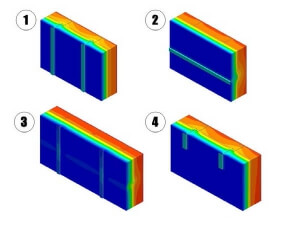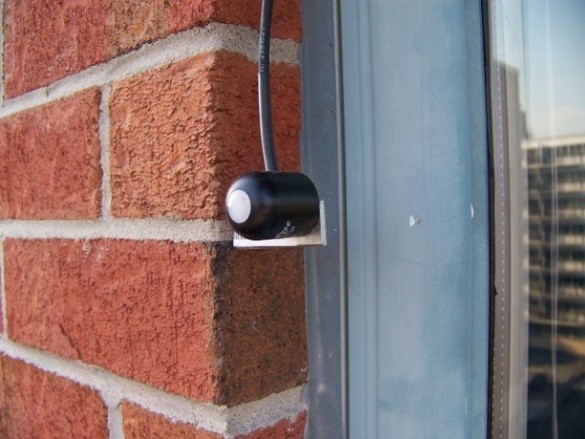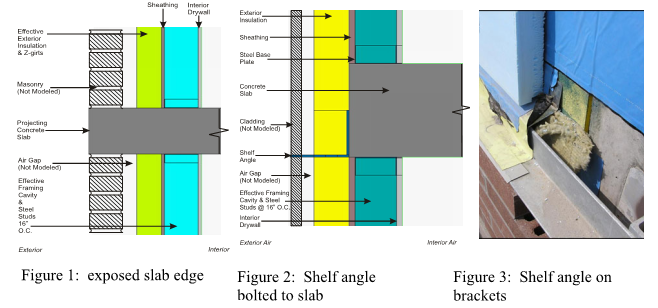With a continued focus of sustainable and energy efficient building design, more attention is being paid to the thermal performance of building enclosure assemblies. Providing a higher level of thermal resistance in the building enclosure may seem as straightforward as just adding insulation, but when building with conductive elements like steel, achieving higher thermal performance levels can be elusive.
Solutions MH: Thermal Performance of Curtain Wall Spandrel Panels
Leading the Way to a Sustainable Future
Spandrel panels constituent of glazing systems are a widespread architectural element of mid- and high-rise buildings. Designers long for spandrel panel sections to match the requirements of energy standards for opaque elements. Regrettably there is not an available insulation that can be packed into the back-pan of typical spandrel panel sections to meet the requirements of current energy standards for opaque elements for mild and cold climates. This situation often leads designers to consider adding insulation inboard of spandrel sections to improve their performance.
ASHRAE 1365-RP exclusive game-changing research from Morrison Hershfield
Morrison Hershfield was the principal investigator for ASHRAE Research Project 1365 – Thermal Performance of Building Envelope Details for Mid- and High-Rise Buildings.
High or Low-E? Low-E Coated Glass for Apartment Buildings
The dominant form of apartment building design in major urban areas in Canada is the double-loaded corridor type in which most apartments tend to face in opposite directions and have exposure only on one face of the building, although the plan shape could vary. Less common are three wing, four wing (cross) and L-shaped plans. In these buildings, some apartments might have exposure to more than one side of the building and only rarely on opposite sides.
Optimizing Gains while Undergoing Building Envelope Renewals
Nobody likes spending large sums of money on their assets when one or more building envelope assemblies have reached the end of their service life. Yet, major renewals are inevitable for long-term building assets.
Design Implications of Glazing Ratio Restrictions
Recent energy codes set the trend for significant improvements to the thermal performance of the building enclosure. These new codes challenge building owners who desire large expanses of vision glass to utilize higher performance technologies. The implication of glazing ratio on glazing system U-values and spandrel panel design will be presented including a comparison of prescriptive versus performance-based approach to code compliance.
Real R-Value of Exterior Insulated Wall Assemblies
The recent drive towards sustainable building construction has placed new emphasis on the provision of durable wall assemblies that provide a high effective resistance to heat flow (R-Value).
The authors’ practice focuses on large multiresidential, commercial and institutional buildings constructed of concrete, steel, masonry and glazing systems. In these types of buildings thermal performance has not historically been treated as a high priority item. Now, however, the requirements of sustainability programs such as LEED are requiring architects to design wall systems that provide high levels of thermal resistance. Architects are often shocked at the difference between effective R-value of a proposed opaque wall assembly and the nominal R-value of installed insulation materials. The difference is a result of the thermal bridges associated with structural elements and connections that pass through the building thermal envelope.
The Concept of Linear and Point Transmittance and its Value in Dealing with Thermal Bridges in Building Enclosures
Thermal bridging through insulating layers can greatly reduce the thermal performance of building assemblies. As such, determining the effects of thermal bridging is often of immense importance to building engineers, energy modelers and architects in accurately designing a building. This can be very difficult to accomplish, and as a result many building codes and standards do not comprehensively address this problem.
Design Considerations for Open Joint Rainscreen Assemblies
Recent years have seen an increased trend towards rainscreen cladding system for the benefits they offer in terms of rain water management. These systems typically consist of an exterior cladding, a drainage cavity and a back-up weather resistive barrier.
A Case Study for Waterproofing Below Grade Walls Shored with Continuous Soil Mix Technology Using a Bentonite Waterproofing System
The development of a seven-story office building with a four-story underground parking garage, located adjacent to the Alaskan Way viaduct just south of downtown Seattle posed unique challenges. The project was situated on a sensitive site with specific soil conditions and a high water table. The team identified early on the need to develop strategies to minimize the risks associated with the site conditions both during construction and over the long term. The site conditions along with the project requirements were all considered in the selection of the appropriate shoring system and waterproofing system for the structure.








